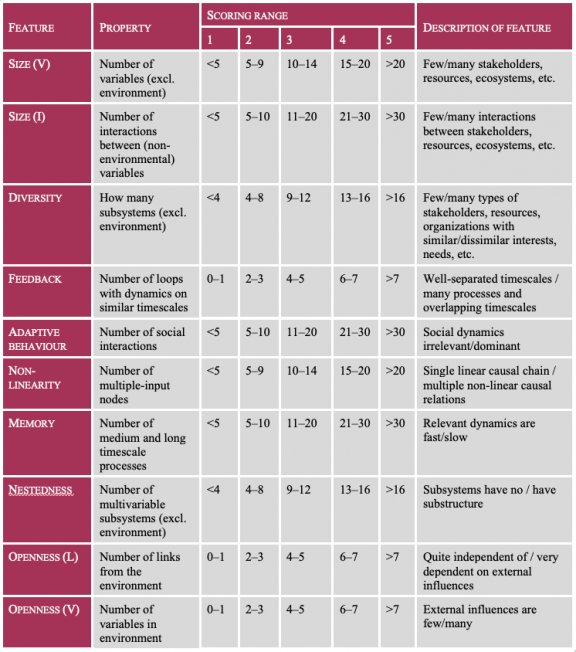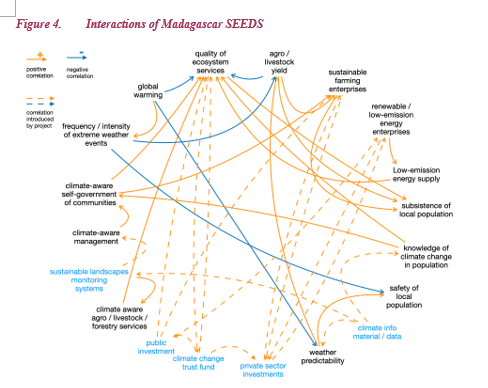About the Bees, Climate and Complexity
“To diagnose the problems and potentialities of linked social–ecological systems requires serious study of complex, multivariable, nonlinear, cross-scale, and changing systems.” Elinor Ostrom.
Looking at a beehive, one may think it is something incredibly chaotic, with no order whatsoever. However, every single one of these little insects, often dodged by us with a sense of alarm, performs a task instrumental to the hive's effective functioning, not to mention the ecosystem. If one of them cannot achieve that task, another member of the nest will smoothly take its place. And did you know that regardless of the outside temperature, bees can maintain a constant temperature inside the hive?
Bees are part of a system, and a complex one at that. They work together to produce a result. They interact with each other in unpredictable ways and adapt to changes in their environment. You may be able to easily explain the task of a single bee or a group of them; that may not be the case when it comes to the whole hive. Modularity, adaptive behaviour, and most importantly, unpredictability are some of the features that such structures present. That of a beehive is just one of many real-life examples that can help us grasp the concept of ‘complexity’ and how it can be applied to many different contexts, including adaptation to climate change and evaluation of climate action impacts.
One way to understand the meaning behind this concept would be to break down the term ‘complex’. It comes from Latin complexus (to embrace), which is partially rooted in plectere (to fold). Putting them together, we have “embracing many folds”. A complex system is more than the mere sum of its parts or ‘folds’; each interaction entails unique/new properties that shape the system over time. Complexity is also a spontaneous emergence of structure and behaviour in decentralized systems composed of many parts and many interactions. The IEU Learning Paper "How to bridge the gap between complexity science and evaluation – A new analysis tool as a first step" by Karoline Wiesner, Jyotsna Puri, and Andreas Reumann concludes that the “complexity of a system lies in its ability to self-organize into structured states and to maintain this structure over relevant periods of time; in the non-linearity of transitions between different structured states; and in the ability to memorize and to adapt its behaviour.”
When thinking about the application of complexity science to mitigation and adaptation, one may start by looking at human-climate systems. Since they are the results of the interaction between two complex systems, the human system on one side and the climate system on the other, they too are, by nature, complex systems. As such, they will present the features of complex systems, posing a number of challenges that cannot possibly be resolved using traditional, linear solutions.
The question then is: how does one deal with such a level of complexity? How does one design, implement, and evaluate a project that intervenes in and becomes part of a complex system? The IEU addresses this question by introducing a mapping tool that is based on three steps: first, identifying the components of the system; second, analysing the interactions between them and their cause-effect relations; third, repeating these two steps for any intervention planned in the adaptation/mitigation project.
Conceptually, the social–ecological economic dynamic systems (SEEDS) tool deploys mathematical tools of complex networks and non-linear dynamics, to inform measures of complex systems’ features that apply to climate projects and programmes. Each feature can be assessed from the variable/interaction representation of SEEDS as follows:
Size, Diversity, Feedback, Adaptive behaviour, Non-linearity, Memory, Nestedness and Openness
The IEU also suggests a complexity score for climate projects. To test it, the IEU’s SEEDS tool is employed to assess the complexity of three GCF-approved projects in Madagascar(FP026), Vanuatu(FP035), and Chile(FP017). If we calculate the complexity score for each of these projects, we see that the Madagascar project and the Vanuatu project have a similar score, but in the case of Vanuatu, the intervened system is more complex. The Chile project, however, has the fewest variables and interactions, hence appearing to be the smallest of the three. Completing this scoring exercise gives us an estimate of the project's level of complexity and an understanding of what kind of approaches evaluations could be applied. But not only that, the tool may be applied in and could provide grounds for evaluation criteria to go beyond the traditional and often anthropocentric approach.
One cannot expect to find simple solutions to complex problems with many ‘folds’ that cannot be ‘unfolded’. But one can, with the right tools, understand why that fold is bent in a certain way, how it relates to the other folds, and what kind of impact an external “hand” would have on that system. Let us remember it is only complex and not complicated!
*Beatrice Muroni has successfully completed her IEU internship in October 2021. She is currently supporting the Division of External Affairs of the GCF.
Disclaimer: This guest blog was originally published by the author. The views expressed in this guest blog are the authors' own and do not necessarily reflect the views of the Independent Evaluation Unit of the Green Climate Fund.




